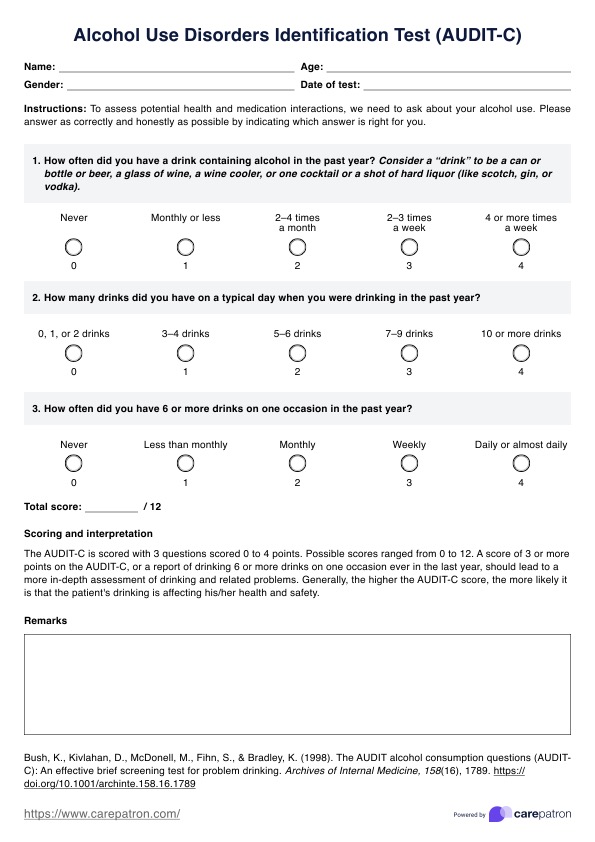AUDIT-C is a quick and effective brief screening test that usually takes less than two minutes to complete. Since it only has three questions about alcohol consumption and risky drinking habits, patients can answer it easily, and healthcare professionals can score it quickly.

AUDIT-C
Access the AUDIT-C screening tool to assess alcohol use and identify risky drinking among individuals quickly. Incorporate this test in your practice today!
AUDIT-C Template
Commonly asked questions
AUDIT-C is a short alcohol screening test used to check for unhealthy alcohol use and alcohol use disorders. It helps healthcare professionals quickly identify people who may need further assessment or support for their drinking habits.
AUDIT-C has three questions that assess alcohol consumption, including how many drinks a person has, how often they drink, and if they engage in hazardous drinking, like having six or more drinks in one sitting.
EHR and practice management software
Get started for free
*No credit card required
Free
$0/usd
Unlimited clients
Telehealth
1GB of storage
Client portal text
Automated billing and online payments











